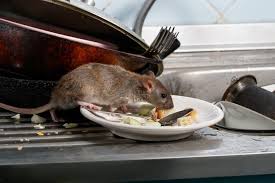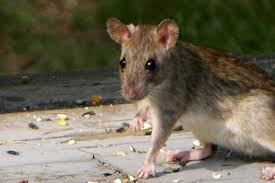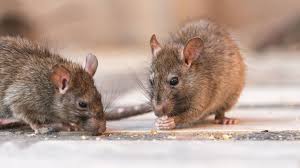How Do I Get Rid of Rodents in My Home?
Mice and rats are never welcome house guests, but their adaptability and low dietary needs make it easy for them to become your new uninvited roommates. A small hole in the wall or door is all a mouse needs to enter your home. What’s more, if there is food available inside they have absolutely no reason to leave.
As a pest control company in Greensboro, NC, we know that it can be hard to completely rodent-proof your home, but making your home as inhospitable as possible to these critters can go a long way in preventing an infestation. Here are some easy ways to make sure that mice and rats aren’t making themselves at home in your home.
Keep a Clean and Uncluttered House
Rodents eat as little as 15-20 grams of food a day, so even just a tiny crumb left over after dinner can keep a mouse alive and well in your house. Wiping down counters after meals and not leaving dirty dishes out can go a long way to cutting down on possible food sources. It’s also important to keep clutter in your home to a minimum. Mice and rats like to nest and hide in clutter, so keeping floors and other surfaces clean and visible makes it harder for mice to feel secure in your home. Keep this in mind for storage areas where rodents usually reside — such as basements, attics, and large closets.
Seal up Food and Keep It out of Reach
Mice aren’t picky when it comes to food so it’s important to keep opened food containers, garbage receptacles, and even pet food sealed up tightly. Feeding pets only at meal times when they are likely to clean house on their meals is a good way to make sure mice and rats aren’t finding bounties of food in easy access locations.
Seal Entry Points in Your Home
Open doors and windows are the easiest access point for rodents. Keeping them shut at all times and installing screens in the ones you want to keep open can go a long way in keeping all kinds of pests outside. It’s also important to check your doors and windows for small holes. Mice can enter your home through an opening as small as a ¼”, so walking around the outside of your house and patching up any visible holes will close off easy entry points.

How to get rid of mice and rats in a commercial kitchen
If you detect rodents in your food business, you need to deal with them right away. Some of the most common methods used to eradicate rodent infestations are:
- glue boards
- traps
- poisonous bait
GLUE BOARDS
Glue boards do not contain poison so you don’t run the risk of contaminating food with chemicals. Rodents run onto the glue board and get stuck, though rats can often free themselves so they are more effective if you are dealing with mice. Be sure to check these often and discard of the boards and dead rodents once caught.
TRAPS
Mouse and rat traps are another option, with the spring trap being the most commonly used. Fresh food is used as bait, and the rodent is trapped by the spring when it tries to eat the food. Check traps frequently and dispose of dead rodents. (Wash your hands thoroughly afterwards!)
POISONOUS BAITS
Poisonous baits should only ever be used with extreme caution and must be kept well away from food and food preparation areas. Employees should be instructed to stay well away from them.

What do I do when the bait is being eaten off the snap trap but the rodent is not being caught?
Position the snap trap so that the baited end of each trap is placed perpendicular to the wall. Rodents generally travel with their bodies against a wall for protection. The use of 3 or more snap traps is recommended in problem areas. It may be necessary to bait a rat trap without setting the trap and allow the bait to be eaten a couple of times. Then set the trap with more bait. Rats tend to shy away from new objects so this method gets them accustomed to the trap. Mice are more inquisitive than rats, so pre-baiting is less likely to be needed.

Rodents Tip
Protect Tack and Equipment from RodentsYour feed room isn’t the only room in the barn you want to safeguard from rodents. The fleecy underside of your good Western saddle and those thick quilted leg wraps make perfect nesting material for mice and rats. Keep the door closed and fill hole and gaps with steel wool or metal hardware “cloth” to deter them from entering. Store out-of-season items like blankets, sheets, leg wraps and bandages in sealed containers (metal is best), making sure they’re clean and totally dry first.
Don’t Let Rodents Contaminate and Waste Feed
Did you know the average adult rat consumes nearly 10 percent of its body weight in food per day? Rodents contaminate far more feed than they eat from their urine, droppings and hair. To deter rats and mice in your barn, store all grain products, pellets and supplements in metal bins (clean metal trash cans are ideal) with tight-fitting lids. Sweep up spilled feed — including in the stalls — on a daily basis and dispose of it in a tightly sealed metal trash container.
Clean Up After Rodents
Properly cleaning up rodent-contaminated areas can help prevent hantavirus pulmonary syndrome, a rare, but potentially fatal respiratory disease that people can get after inhaling dust contaminated with rodent urine or droppings. Follow these tips to properly clean up a rodent-contaminated area:
- Air out enclosed areas for at least 30 minutes by opening doors and windows. Leave the enclosed area while it’s being aired out.
- Don’t vacuum, sweep, or stir up dust in and around rodent contaminated areas – this can cause contaminated dust particles to be inhaled. Note that dust mask may provide some protection against dusts encountered during cleaning, but does not protect against viruses.
- Spray and wet down dead rodents, nests, droppings, urine, and other contaminated materials with a 10% bleach solution (1 part bleach to 9 parts water) and let this soak for 10 minutes. Other disinfectant products can be used – follow the label instructions for dilution and disinfection time.
- Wearing rubber gloves, wipe up the contaminated materials with paper towels, rags, or mops and place waste into a double plastic bag and into the garbage.
- Before removing gloves, wash or disinfect them.
- Wash hands with soap and warm water after removing gloves (or use alcohol-based hand sanitizer if soap and water is not available).